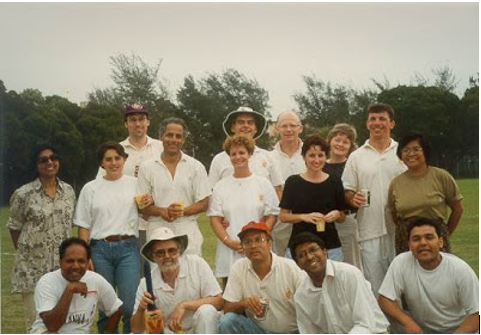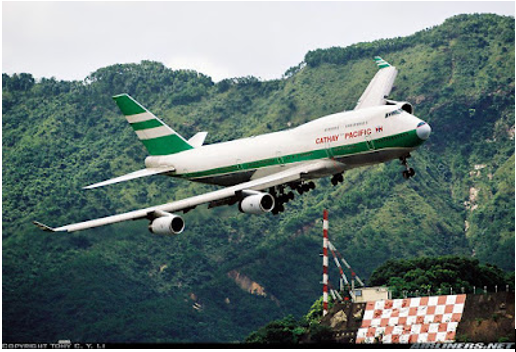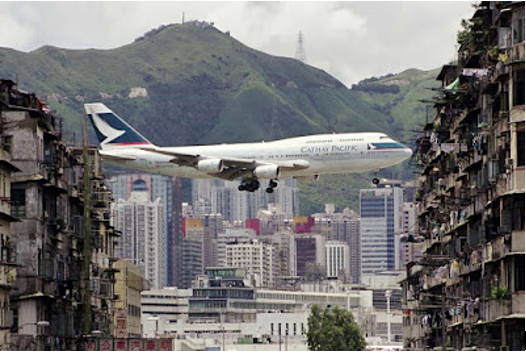“Kai Tak Heart Attack” – By GEORGE BRAINE

In the mid-1990s, when I began to play casual cricket in Hong Kong, some games were at Mission Road grounds, in Kowloon. Cricket was a low priority sport, so football was also played there, and the grass was somewhat patchy. Kowloon is a crowded part of Hong Kong, and we could see mid-rise buildings and a multi-storied public school nearby.

Chinese U cricketers with supporters at Mission Road, 1996
Cricket at Mission Road was dramatic, but not due to the prowess on the field. The ground was right beneath the flight path to Kai Tak airport, only about two nautical miles away. Kai Tak was one of the busiest airports in the world, and jets landed every five minutes or so. And some of them flew over Mission Road.
A thundering noise of a low flying aircraft would signal another approaching flight, and a great shadow would glide across the field as a giant 747 flew past. The noise drowned everything, and perhaps only the batsmen, the bowler, and the wicketkeeper (not even the umpires) kept their eyes on the ball. I, for one, in the outfields, couldn’t help but gaze upward, trying to identify the airline: Cathay Pacific, United, Northwest, JAL, ANA, Korean, Malaysian, Thai, Singapore, Qantas, British Airways, Air France, KLM, Lufthansa, Air Lanka – all flew past. This process – the ear-splitting roar, the massive, gliding shadow – was repeated over and over again during a game.
Even more dramatically, as I watched, the aircraft would bank sharply to the right just as it passed the grounds, and disappear from sight. I read that a checkerboard painted on a hill just past the grounds was the sign for a plane to make that sharp, 47 degrees right turn, while descending from 600 to 150 feet, so that it could line-up and level off for landing at Kai Tak’s only runway. All this had to be done within a few seconds, manually, because the maneuver wasn’t possible on auto-pilot. If you turned too late, the aircraft would plough into a hill. They said the ride would “give a Valkyrie the heebie-jeebies”. No wonder pilots nicknamed the descent “Kai Tak Heart attack”!
As I began to travel in and out of Kai Tak, I learned a little secret: the most dramatic views of the landing were from the economy class, in a seat above the right wing. When I did manage to get the right seat, the experience was beyond belief.

As the aircraft descended rapidly over busy Victoria Harbor, skimming over ships and ferries, then onto the crowded Kowloon side, over a vast cemetery, almost touching high-rise rooftops, a speck of greenery here and there, the engines reviving up and reviving down, and the sound of landing gear being lowered. The runway was not yet in sight, but I knew we had just passed Mission Road grounds because the plane made the sharp right turn, and lined-up for landing through a canyon of housing blocks. I could see the residents going about their lives – cooking, sitting down for meals, watching TV – quite nonchalantly, as if unware of the gigantic flying object passing by their windows. Would the wings snag the drying laundry – T shirts, pants, underwear – from the balconies? Would the plane spotters on the flat roofs be dragged along? As the plane came to a stop, spontaneous applause might break out in the cabin. A mixture of exhilaration and relief.

Beloved Kai Tak shut down on July 6, 1998. A little bit of Hong Kong’s magic died with it. And cricket at Mission Road was never the same again.
GEORGE BRAINE







